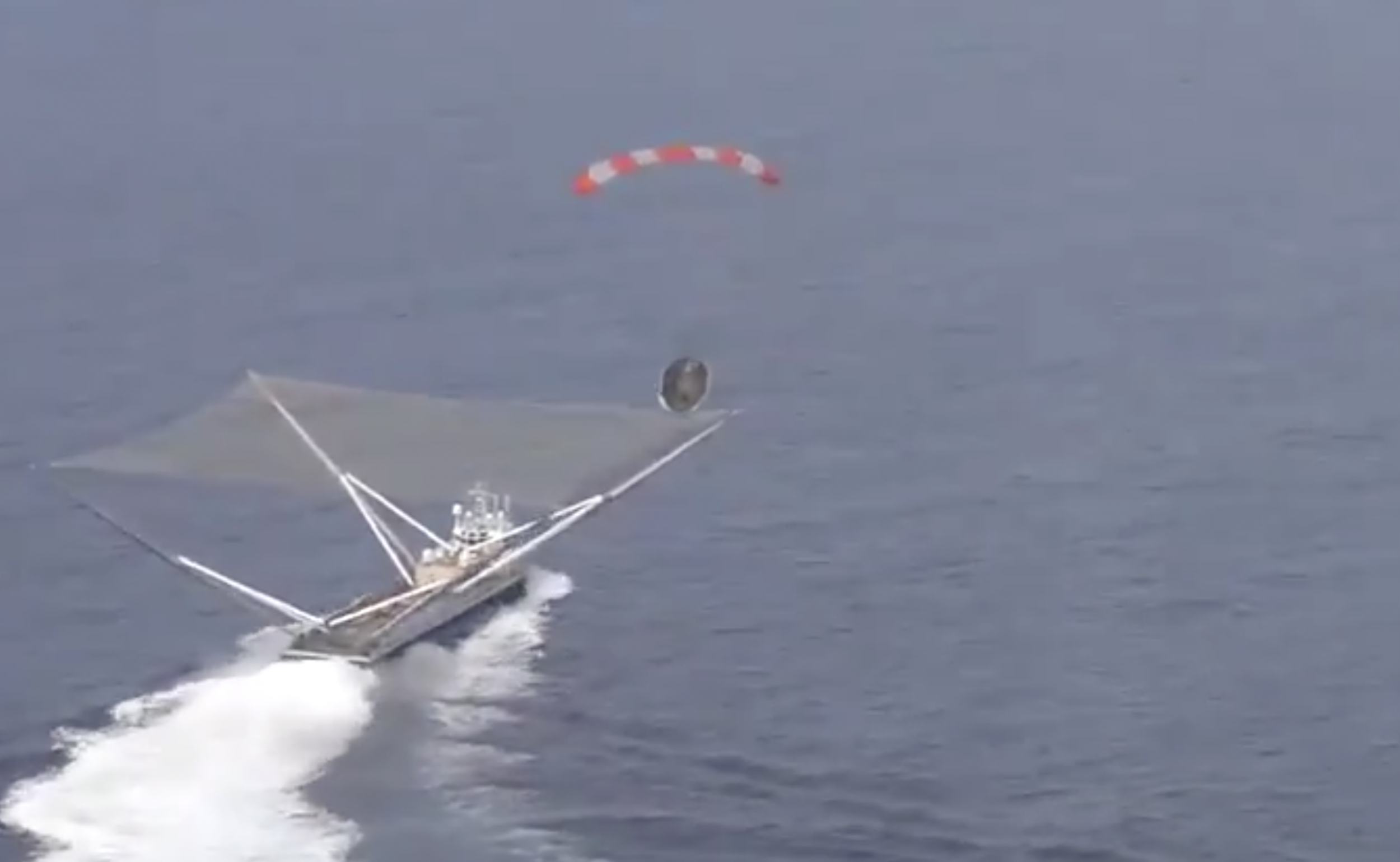SpaceX successfully catches both halves of rocket fairing after launch for first time ever
Re-usable rockets are key to Elon Musk's mission to make space journeys more affordable

SpaceX has successfully caught both parts of its rocket's nosecone fairing for the first time ever.
The pieces of fairing – the bulbous part at the top of the rocket, inside of which the payload is stored – left with a rocket carrying a South Korean satellite known as Anasis-II overnight. After it had been sent into the air, it dropped back down to Earth – being caught by a specially made ship.
Being able to safely catch as much of rockets as possible is key to SpaceX's mission to bring down the cost of space travel, since it means the rockets can be re-used rather than built all over again.
The company has succesfully caught a variety of parts from its rockets in the past, including one piece of the fairing, and Falcon 9's boosters. But it has never before caught both halves of the fairing in one go.
The pieces are worth around $6 million, according to Elon Musk. While they have been re-used in the past if only one piece has been caught, or if they can be safely brought back out of the sea after landing, the new success could make journeys much cheaper.
SpaceX is yet to share footage of the fairing successfully landing or being caught. But previous test videos posted by the company show how the ships move into place to allow it to drop onto a large piece of netting.
The company did however share video of the first stage of the rocket dropping down onto a droneship after it was launched.
Elon Musk celebrated the success on Twitter. "Both fairing halves caught from space by @SpaceX ships!" he wrote.
Join our commenting forum
Join thought-provoking conversations, follow other Independent readers and see their replies
Comments
Bookmark popover
Removed from bookmarks